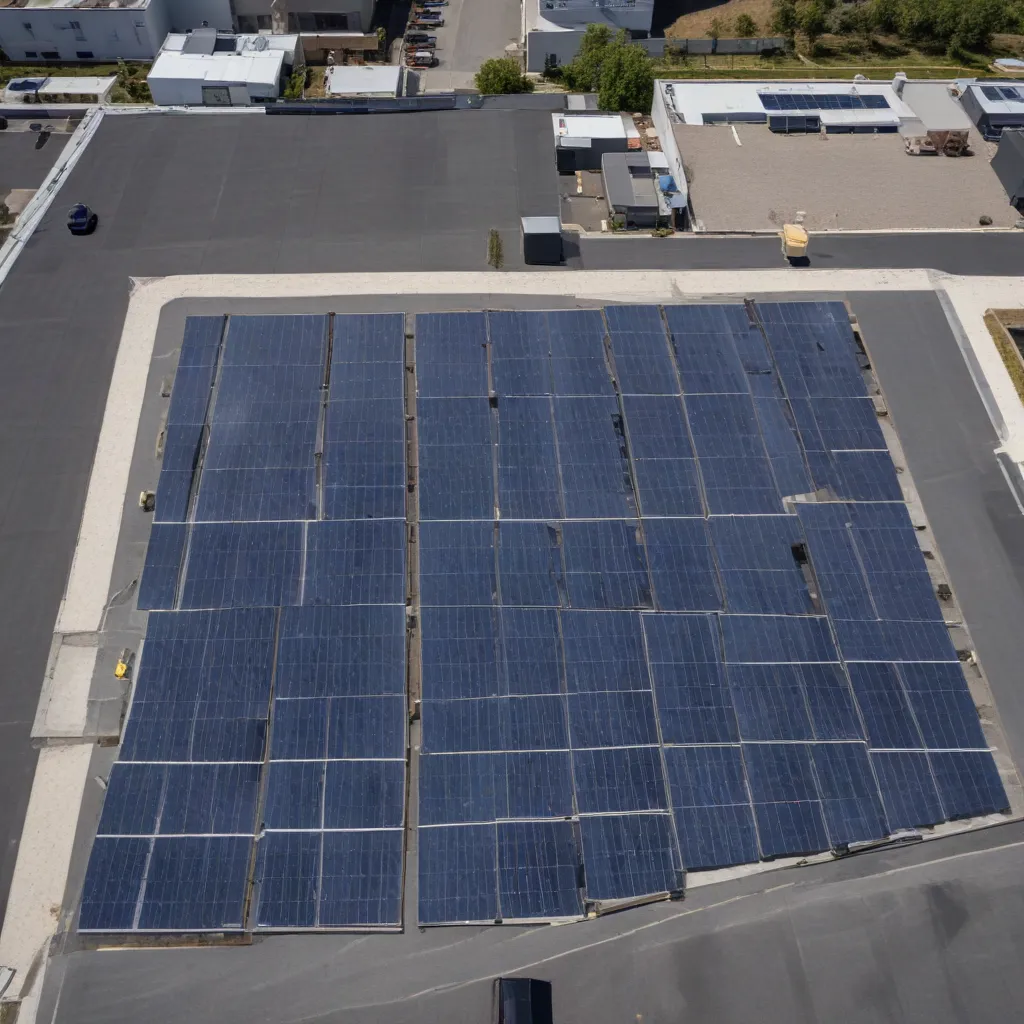
As the world embraces the shift toward sustainability, the commercial roofing industry is at the forefront of harnessing renewable energy. One of the most promising solutions is the integration of solar power into commercial roofing systems. This not only provides a clean, renewable source of energy but also offers a range of benefits for building owners, the environment, and the future of our planet.
Renewable Energy Considerations
The adoption of solar power in commercial roofing aligns with the growing demand for sustainable and energy-efficient building practices. Renewable energy sources, such as solar, are becoming increasingly attractive due to their ability to reduce greenhouse gas emissions, lower energy costs, and promote long-term environmental stewardship.
Benefits of Solar Power Adoption:
– Reduced reliance on fossil fuels and decreased carbon footprint
– Potential for significant energy cost savings through on-site electricity generation
– Increased property value and marketability for eco-conscious businesses
– Eligibility for various tax incentives and rebates offered by governments and utilities
Sustainability Factors:
– Use of recycled and recyclable materials in roofing and solar panel components
– Improved energy efficiency through the integration of cool roofing and green roofing systems
– Minimized waste and extended roof lifespan through proper maintenance and repair
Environmental Impact:
– Generation of clean, renewable electricity with zero direct emissions
– Reduction in the strain on local power grids and the need for new fossil fuel-powered plants
– Mitigation of the urban heat island effect through the use of reflective and insulating roofing materials
By embracing solar power integration, commercial building owners can play a crucial role in driving the transition toward a more sustainable future, all while reaping the benefits of cost savings and environmental stewardship.
Commercial Roofing Design
Integrating solar power into commercial roofing systems requires careful consideration of various design factors to ensure optimal performance and long-term viability.
Structural Requirements:
– Roof structure must be capable of supporting the additional weight of solar panels and associated equipment
– Roofing materials and underlayment must be compatible with the solar panel mounting system
– Roofing system must provide adequate wind uplift resistance to withstand extreme weather events
Roof Orientation and Angle:
– South-facing roofs are generally preferred for maximum solar energy capture
– Optimal tilt angle varies based on geographic location and latitude
– Shading from nearby structures or vegetation must be minimized
Installation Challenges:
– Ensuring proper roof penetrations and flashings for electrical conduits and cables
– Integrating solar panels with existing roofing features, such as soffits, vents, and skylights
– Maintaining accessibility for roof maintenance and solar system servicing
By addressing these design considerations, commercial roofing professionals can create a seamless integration of solar power while maintaining the structural integrity and long-term performance of the roofing system.
Solar Panel Integration
At the heart of solar power integration in commercial roofing are the photovoltaic (PV) panels responsible for converting sunlight into usable electricity.
Photovoltaic Technology:
– Monocrystalline and polycrystalline silicon-based panels are the most common
– Advancements in materials and manufacturing have improved efficiency and durability
– Emerging technologies, such as thin-film and bifacial panels, offer increased flexibility and energy production
Mounting Systems:
– Ballasted or anchored systems for flat or low-slope roofs
– Roof-integrated or roof-mounted systems for sloped roofs
– Adjustable tilt mechanisms for optimizing solar panel orientation
Electrical Integration:
– Connection to the building’s electrical system through inverters and interconnection equipment
– Compliance with local building codes and utility requirements for grid-tied solar systems
– Incorporation of backup battery storage for continued power during grid outages
By seamlessly integrating solar panels and their supporting infrastructure, commercial building owners can harness the power of the sun to generate clean, renewable electricity and reduce their reliance on traditional energy sources.
Operational Optimization
To maximize the benefits of solar power integration, commercial building owners must consider various strategies to optimize the system’s performance and long-term viability.
Energy Efficiency Strategies:
– Pairing solar power with cool roofing and green roofing systems to enhance overall energy efficiency
– Utilizing smart building automation and energy management technologies to optimize energy consumption
– Exploring opportunities for integrating energy storage solutions, such as lithium-ion batteries or flow batteries, to store excess solar energy
Maintenance and Monitoring:
– Regular cleaning and inspection of solar panels to maintain optimal performance
– Monitoring of system output, energy generation, and maintenance records
– Proactive maintenance and prompt repair of any issues to ensure long-term reliability
Cost-Benefit Analysis:
– Evaluating the initial installation costs and long-term energy savings
– Identifying available tax incentives, rebates, and other financial incentives to offset the initial investment
– Considering the increased property value and marketability of a sustainable commercial building
By adopting a comprehensive approach to operational optimization, commercial building owners can unlock the full potential of their solar power integration, achieving a favorable return on investment and contributing to a more sustainable future.
The integration of solar power into commercial roofing systems represents a transformative shift in the way we approach energy generation and building sustainability. By harnessing the abundant and renewable energy of the sun, commercial building owners can reduce their carbon footprint, lower energy costs, and position their properties as exemplars of environmental stewardship. As the industry continues to innovate and refine solar technologies, the future of commercial roofing is undoubtedly bright, both figuratively and literally.
To learn more about integrating solar power into your commercial roofing system, visit Genuine Roof Systems or contact a roofing specialist today. Together, we can create a sustainable and energy-efficient future, one roof at a time.

























